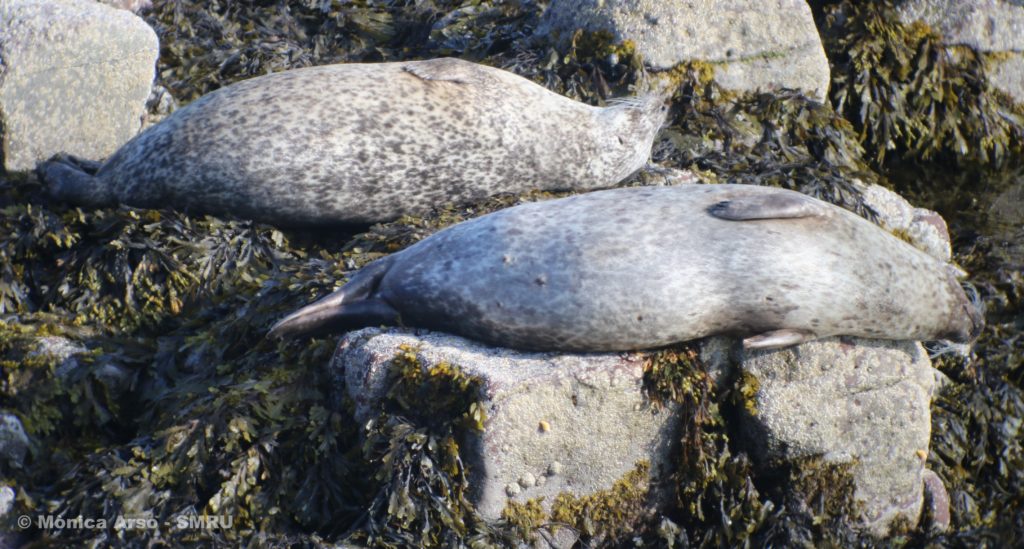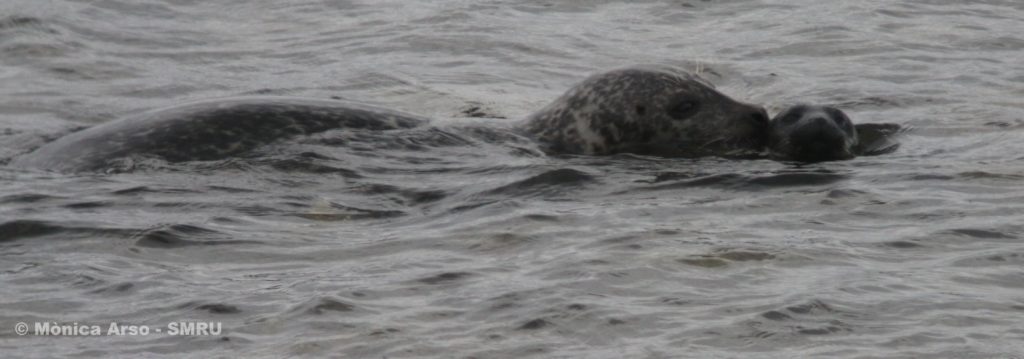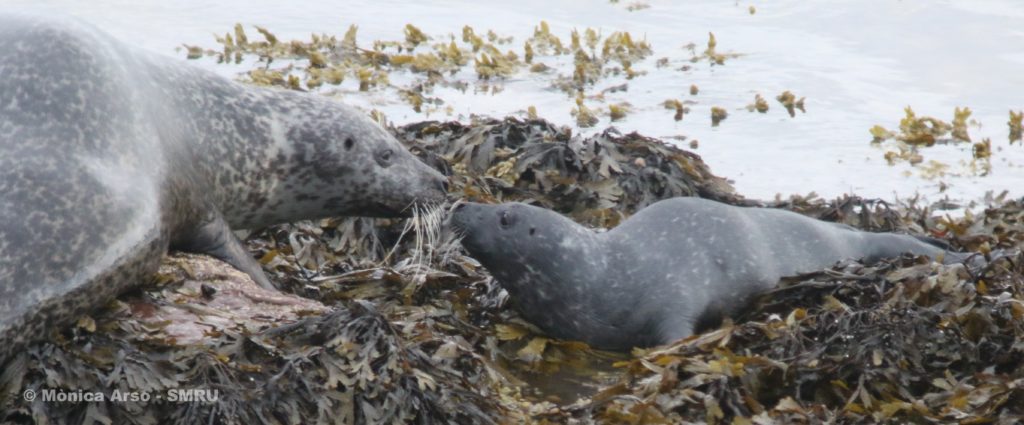The photoID season in Orkney started a couple of weeks ago, just before the start of June. Having been away from Orkney since last August, it was nice to recognize the seals and start seeing heavily pregnant females at the monitored haulout sites.

Despite seeing familiar faces, the numbers of seals at the different haulout sites around Burray and Widewall Bay were lower to start with compared to last year. After a few days of low counts I discovered a bunch of seals resting at some more distant skerries. They were too far for me to take good photo-ID data but it was good to see that the numbers were not that low after all!

The sun has been mostly shining in Orkney, which sometimes is not ideal when taking photographs of sleeping hazy seals, as Izzy has found out in Kintyre too. Before the pups arrive, the dynamics at the haulout sites can be fairly calm, as once all seals have found the perfect spot to rest, it’s snooze time.The key is to have patience and wait for the seals to change position as the tide advances or wait for them to lift their heads. Even though we could potentially use any part of their pelage for identification, we focus on the face, from both sides and from the front, as that is the easiest part to photograph consistently for all seals.

The start of this week brought a nice surprise with the first pup of this season in Orkney! The pup belongs to a female from the catalogue, Or038, which we first photographed in 2016. The mum-pup pair were seen at the haulout for a bit while the pup suckled and then went into the water where they were seen interacting very close by, with frequent nose-to-nose contact, and the pup managed to ride on mum’s back when heading away.


The following day we managed to spot the same mum-pup pair at a nearby haulout site. Because pups are born with their adult coat, each pup already has a unique pelage pattern, which allows us to identify each pup and follow them through the season. I suspect the number of little ones will start to increase from now on, given the sightings of heavily pregnant females at the haulout sites. We will be making notes and taking photographs of all mum-pup pairs through the season, which will help us determine the birth rates at each of the study sites.
Written by Mònica
